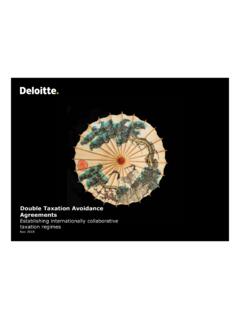Transcription of Capital in the Twenty-First Century - Dowbor
1 Capital in the Twenty-First CenturyCAPITAL IN THETWENTY-FIRSTCENTURYT homas PikettyTranslated by Arthur GoldhammerThe Belknap Press of Harvard University PressCAMBRIDGE, MASSACHUSETTS LONDON, ENGLAND2014 Copyright 2014 by the President and Fellows of Harvard CollegeAll rights reserved first published as Le Capital au XXI si cle, copyright 2013 ditions du Seuil Design by Dean Bornstein Jacket design by Graciela Galup The Library of Congress has cataloged the printed edition as followsPiketty, Thomas, 1971 [ Capital au XXIe si cle. English] Capital in the Twenty-First Century / Thomas Piketty ; translated by Arthur cmTranslation of the author s Le Capital au XXIe si bibliographical references and 978-0-674-43000-6 (alk.)
2 Paper)1. Capital . 2. Income distribution. 3. Wealth. 4. Labor economics. I. Goldhammer, Arthur, translator. II. 2014332'.041 dc232013036024 ContentsAcknowledgmentsIntroductionPart One: Income and Capital1. Income and Output2. growth : Illusions and RealitiesPart Two: The Dynamics of the Capital /Income Ratio3. The Metamorphoses of Capital4. From Old Europe to the New World5. The Capital /Income Ratio over the Long Run6. The Capital -Labor Split in the Twenty-First CenturyPart Three: The Structure of Inequality7. Inequality and Concentration: Preliminary Bearings8. Two Worlds9. Inequality of Labor Income10. Inequality of Capital Ownership11. Merit and Inheritance in the Long Run12. Global Inequality of Wealth in the Twenty-First CenturyPart Four: Regulating Capital in the Twenty-First Century13.
3 A Social State for the Twenty-First Century14. Rethinking the Progressive Income Tax15. A Global Tax on Capital16. The Question of the Public DebtConclusionNotesContents in DetailList of Tables and IllustrationsIndexAcknowledgmentsThis book is based on fifteen years of research (1998 2013) devoted essentially to understanding thehistorical dynamics of wealth and income. Much of this research was done in collaboration with earlier work on high-income earners in France, Les hauts revenus en France au 20e si cle(2001), had the extremely good fortune to win the enthusiastic support of Anthony Atkinson andEmmanuel Saez. Without them, my modest Francocentric project would surely never have achievedthe international scope it has today.
4 Tony, who was a model for me during my graduate school days,was the first reader of my historical work on inequality in France and immediately took up the Britishcase as well as a number of other countries. Together, we edited two thick volumes that came out in2007 and 2010, covering twenty countries in all and constituting the most extensive databaseavailable in regard to the historical evolution of income inequality. Emmanuel and I dealt with the UScase. We discovered the vertiginous growth of income of the top 1 percent since the 1970s and 1980s,and our work enjoyed a certain influence in US political debate. We also worked together on anumber of theoretical papers dealing with the optimal taxation of Capital and income.
5 This book owesa great deal to these collaborative book was also deeply influenced by my historical work with Gilles Postel-Vinay and Jean-Laurent Rosenthal on Parisian estate records from the French Revolution to the present. This workhelped me to understand in a more intimate and vivid way the significance of wealth and Capital andthe problems associated with measuring them. Above all, Gilles and Jean-Laurent taught me toappreciate the many similarities, as well as differences, between the structure of property around1900 1910 and the structure of property of this work is deeply indebted to the doctoral students and young scholars with whom I havebeen privileged to work over the past fifteen years.
6 Beyond their direct contribution to the research onwhich this book draws, their enthusiasm and energy fueled the climate of intellectual excitement inwhich the work matured. I am thinking in particular of Facundo Alvaredo, Laurent Bach, AntoineBozio, Cl ment Carbonnier, Fabien Dell, Gabrielle Fack, Nicolas Fr meaux, Lucie Gadenne, JulienGrenet, Elise Huilery, Camille Landais, Ioana Marinescu, Elodie Morival, Nancy Qian, Doroth eRouzet, Stefanie Stantcheva, Juliana Londono Velez, Guillaume Saint-Jacques, Christoph Schinke,Aur lie Sotura, Mathieu Valdenaire, and Gabriel Zucman. More specifically, without the efficiency,rigor, and talents of Facundo Alvaredo, the World Top Incomes Database, to which I frequently referin these pages, would not exist.
7 Without the enthusiasm and insistence of Camille Landais, ourcollaborative project on the fiscal revolution would never have been written. Without the carefulattention to detail and impressive capacity for work of Gabriel Zucman, I would never havecompleted the work on the historical evolution of the Capital /income ratio in wealthy countries, whichplays a key role in this also want to thank the institutions that made this project possible, starting with the cole desHautes tudes en Sciences Sociales, where I have served on the faculty since 2000, as well as the cole Normale Sup rieure and all the other institutions that contributed to the creation of the ParisSchool of Economics, where I have been a professor since it was founded, and of which I served asfounding director from 2005 to 2007.
8 By agreeing to join forces and become minority partners in aproject that transcended the sum of their private interests, these institutions helped to create a modestpublic good, which I hope will continue to contribute to the development of a multipolar politicaleconomy in the Twenty-First , thanks to Juliette, D borah, and H l ne, my three precious daughters, for all the love andstrength they give me. And thanks to Julia, who shares my life and is also my best reader. Herinfluence and support at every stage in the writing of this book have been essential. Without them, Iwould not have had the energy to see this project through to Social distinctions can be based only on common utility.
9 Declaration of the Rights of Man and the Citizen, article 1, 1789 The distribution of wealth is one of today s most widely discussed and controversial issues. But whatdo we really know about its evolution over the long term? Do the dynamics of private capitalaccumulation inevitably lead to the concentration of wealth in ever fewer hands, as Karl Marxbelieved in the nineteenth Century ? Or do the balancing forces of growth , competition, andtechnological progress lead in later stages of development to reduced inequality and greater harmonyamong the classes, as Simon Kuznets thought in the twentieth Century ? What do we really know abouthow wealth and income have evolved since the eighteenth Century , and what lessons can we derivefrom that knowledge for the Century now under way?
10 These are the questions I attempt to answer in this book. Let me say at once that the answerscontained herein are imperfect and incomplete. But they are based on much more extensive historicaland comparative data than were available to previous researchers, data covering three centuries andmore than twenty countries, as well as on a new theoretical framework that affords a deeperunderstanding of the underlying mechanisms. Modern economic growth and the diffusion ofknowledge have made it possible to avoid the Marxist apocalypse but have not modified the deepstructures of Capital and inequality or in any case not as much as one might have imagined in theoptimistic decades following World War II.




